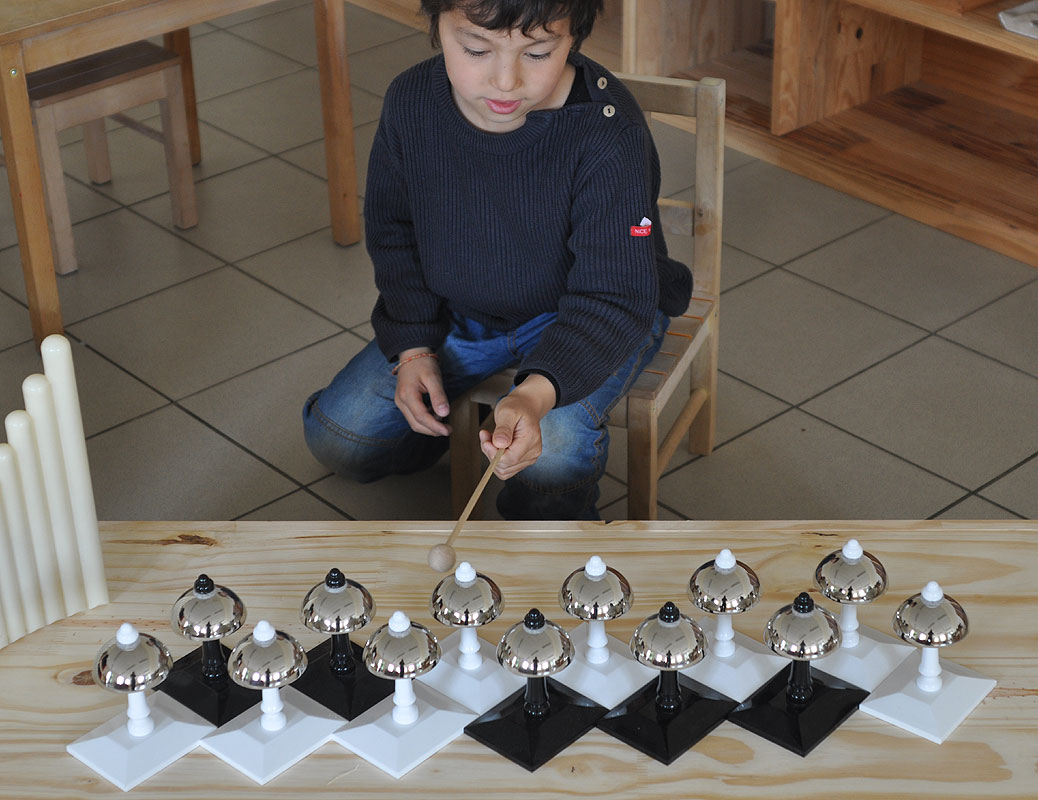Learning Wholetone Panpipes
Learning an instrument can be full of pitfalls, and courses require good design to make sure all areas are covered and to avoid bad habits.
One problem on instruments like the piano is that separate habits have to be learned to play in all keys, through scale and chord practice. So whenever you are learning one key, you are potentially neglecting eleven others. Melodies may be easier to play in some keys than others, for no other reason than the limitations of instrument design. Learning curves are jagged, prompting students to throw in the towel at certain junctures.
When you practice the whole tone panpipes, on the other hand, your improvements in any one key are effortlessly transferable to all the others. Only two scales "shapes" are needed to play in all twelve keys, and they are mirrors of each other. The learning curve is smoother than any other instrument out of the many I have experimented with over the last fifty years.
Teaching kids
Most instruments are taught at the beginner level using a two-pronged approach, dividing the practice into (1) producing the sound and (2) finding the notes.
Learning to produce sound out of a tube closed at one end can be done with any type of tube or length of bamboo, which can be carried in the pocket. Children can be shown how to 'bend' the note down a semitone in a few minutes, though they may need reminding from time to time.
For children or adults who may have a problem changing their mental mapping from the C Major scale of the white notes or of the recorder, to the chromatic or wholetone perspective, a double-wholetone-scale tuned xylophone is a great stress-free way to internalize where to find the notes. Hitting the notes lets you explore without having to think of your sound or intonation at the same time. To help the mapping process, coloured or superhero stickers can be used.
Try this with your mouse:
On the wholetone xylophone, all major scales consist of 3 notes on one row followed by the next 4 notes on the other row, in a repeating cycle. A great tool for acquainting children with the whole tone concept before they are able to blow panpipes! A single length of bamboo that they can slip in their pockets is enough to get them started on blowing and finding the semitones.
A set of Montessori bells can also be laid out to help the transition from the traditional piano layout.

Practising semitones
Many diatonic panpipe players prefer not to stray from their instrument's home key, so that they lack practice at playing those accidentals in tune. With whole tone tuning, every tune you play will give you so much practice in lipping down, on average half the notes you play, that you automatically acquire a balanced technique enabling you to become a fearless explorer of the furthest tonal reaches of your instrument!
You can get practising NOW on this virtual wholetone panpipe! Click on the holes and use the SPACEBAR of your keyboard for the semitones.
improvising method
Some years ago I produced an improvising method called Shortcut to Improvising Fluency for single line instruments based on a special intervallic notation called MOVES, which though conceived as an introduction to whole tone tuned instruments, is surprisingly useful for all instruments. Great for classroom use!
You can purchase your paperback copy by clicking on the cover: 
Kindle version also available, though type may be too small to read, depending on your reader - and eyesight!
To receive a free pdf version, please contact me.
Check out my blog Intervallicawareness.com for tips on how to play like singing in the shower!

Follow me on Twitter @jazzpanflute














